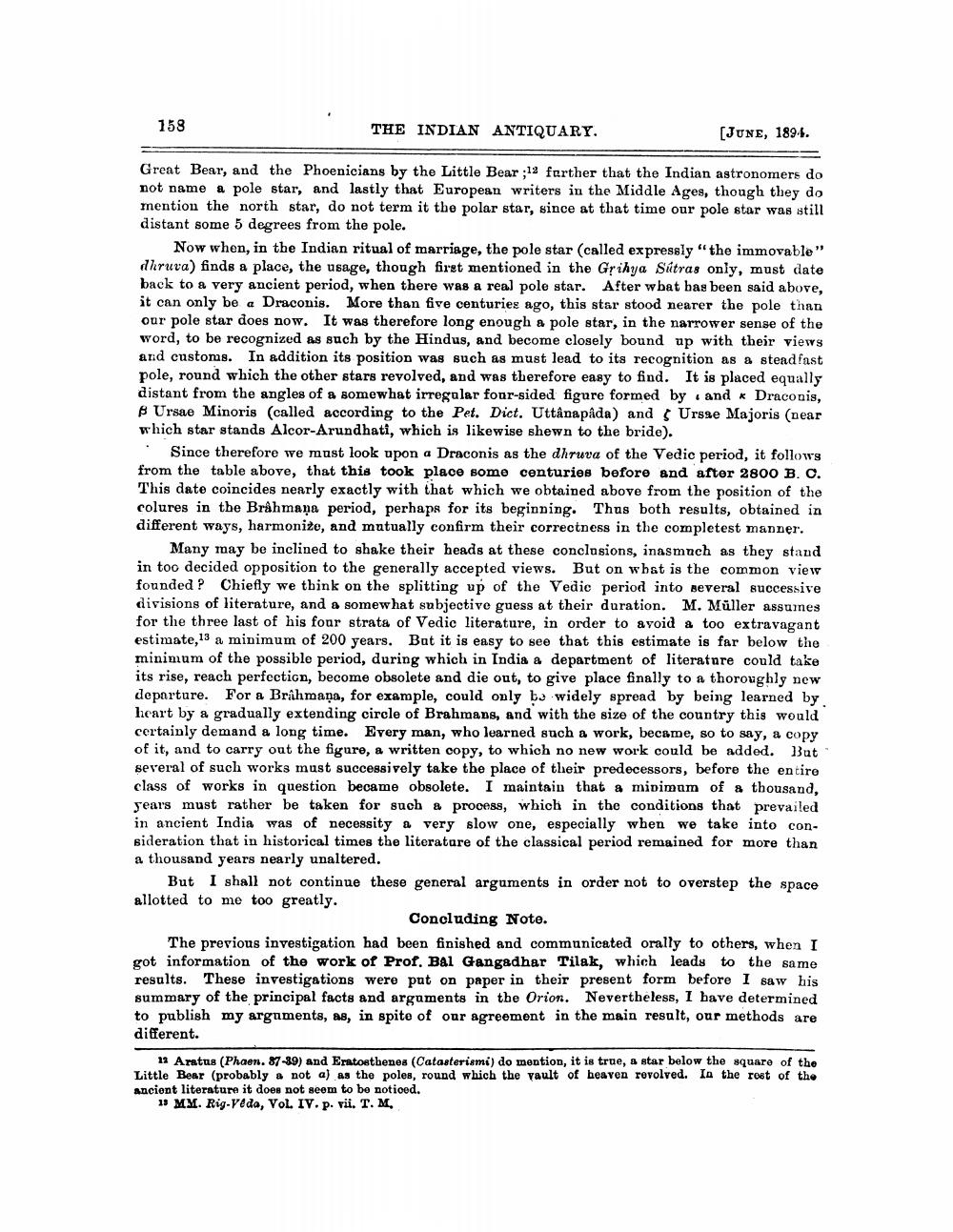________________
158
THE INDIAN ANTIQUARY.
[JUNE, 1894.
Great Bear, and the Phoenicians by the Little Bear ;12 farther that the Indian astronomers do not name a pole star, and lastly that European writers in the Middle Ages, though they do mention the north star, do not term it the polar star, since at that time our pole star was still distant some 5 degrees from the pole.
Now when, in the Indian ritual of marriage, the pole star (called expressly "the immovable" dhruva) finds a place, the usage, though first mentioned in the Grihya Sitras only, must date back to a very ancient period, when there was a real pole star. After w bat bas been said above, it can only be a Draconis. More than five centuries ago, this star stood nearer the pole than our pole star does now. It was therefore long enough & pole star, in the narrower sense of the word, to be recognized as such by the Hindus, and become closely bound up with their views and customs. In addition its position was such as must lead to its recognition as a steadfast pole, round which the other stars revolved, and was therefore easy to find. It is placed equally distant from the angles of a somewhat irregular four-sided figure formed by and * Draconis, B Ursae Minoris called according to the Pet. Dict. Uttânapada) and Ursae Majoris (near which star stands Alcor-Arundhati, which is likewise shewn to the bride).
Since therefore we must look upon a Draconis as the dhruva of the Vedic period, it follows from the table above, that this took place some centuries before and after 2800 B. C. This date coincides nearly exactly with that which we obtained above from the position of the colures in the Brahmana period, perhaps for its beginning. Thus both results, obtained in different ways, harmonize, and mutually confirm their correctness in the completest manner.
Many may be inclined to shake their heads at these conclusions, inasmuch as they stand in too decided opposition to the generally accepted views. But on what is the common view founded P Chiefly we think on the splitting up of the Vedio period into several successive divisions of literature, and a somewhat subjective guess at their duration. M. Müller assuines for the three last of his four strata of Vedic literature, in order to avoid a too extravagant estimate,13 a minimum of 200 years. But it is easy to see that this estimate is far below the minimum of the possible period, during which in India a department of literature could take its rise, reach perfection, become obsolete and die out, to give place finally to a thoroughly new departure. For a Brahmana, for example, could only to widely spread by being learned by heart by a gradually extending circle of Brahmans, and with the size of the country this would certainly demand a long time. Every man, who learned such a work, became, so to say, a copy of it, and to carry out the figure, a written copy, to which no new work could be added. But several of such works must successively take the place of their predecessors, before the entire class of works in question became obsolete. I maintain that a minimum of a thousand, years must rather be taken for such & process, which in the conditions that prevailed in ancient India was of necessity a very slow one, especially when we take into consideration that in historical times the literatare of the classical period remained for more than a thousand years nearly unaltered.
But I shall not continue these general arguments in order not to overstep the space allotted to me too greatly.
Concluding Note. The previous investigation had been finished and communicated orally to others, when I got information of the work of Prof. Bal Gangadhar Tilak, which leads to the same results. These investigations were put on paper in their present form before I saw his summary of the principal facts and arguments in the Orion. Nevertheless, I have determined to publish my arguments, as, in spite of our agreement in the main result, our methods are different.
12 Aratus (Phaen. 87-89) and Eratosthenes (Catasterismi) do mention, it is true, a star below the square of the Little Bear (probably not a) as the poles, round which the vault of heaven revolved. In the root of the ancient literature it does not seem to be noticed.
13 MM. Rig Veda, VOL IV. p. vii. T. M.




